☆☆☆☆☆ 3.25 Star Rating
The Eliminator Pro is a self-fitted adjustable mandibular advancement device that offers more features than its predecessor, the Snore Eliminator. While the product packaging contains no company information other than the email address “eliminatorreviews@gmail.com”, after a few minutes of searching I found that it is manufactured and sold by South Carolina based company Koncept Innovators, which is headed by a gentleman by the name of Sylvan Newby. Mr. Newby sells the Eliminator Pro on his website as well as on Amazon under the seller name “Rambuten”. The company sells two identical products called the “Intelliguard” and also the “Tranquility Pro” for a slightly lower price point.
The company also sells a product called the “Snore Pacifier” which is a tongue stabilizing device that is similar in nature to the Good Morning Snore Solution.
How does it work?
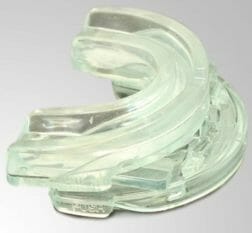 For years now, simple boil and bite mouthpieces that resemble sports mouth guards or night guards have been the standard in self-fitted snoring mouthpieces. Such products have evolved in recent years to include a number of innovative designs, making wearing a mouth guard more comfortable than ever.
For years now, simple boil and bite mouthpieces that resemble sports mouth guards or night guards have been the standard in self-fitted snoring mouthpieces. Such products have evolved in recent years to include a number of innovative designs, making wearing a mouth guard more comfortable than ever.
The Eliminator Pro sets itself apart from most of the competition by offering an incremental advancement feature that requires no tools to adjust. Adjustments can be made by simply holding the mouthpiece by the top tray, squeezing inward on the rear area of the lower tray and gently rocking the lower tray forward or backward to the desired position. Adjustments can be made multiple times after the mouthpiece has been molded.
As with any other mandibular advancement device, the Snore Eliminator Pro is worn inside of the mouth in between the upper and lower teeth. It is placed in the mouth prior to going to sleep. The upper and lower trays work together by holding your jaw slightly forward just enough to allow the lower set of teeth to rest just in front of the upper. The jaw forward action pulls tight loose muscles and tissue that surround the airway. By tightening the airway, you are allowing for the non-restrictive flow of air.
What does a clear, non-restricted airway have to do with preventing snoring? Well, quite a bit actually. Numerous studies going back over 30 years suggesting that advancing the jaw forward is an effective means to eliminate snoring and in some cases can effectively manage mild to moderate cases of sleep apnea. The manufacturer doesn’t, however, make any claims that its product is intended to treat sleep apnea.
Prior to 1994, the only way to obtain such a MAD was by visiting your dentist and having it professionally fitted. This option is still available today but will cost you several thousands of dollars. Most of today’s do-it-yourself mouthpieces can be purchased for under $100 on the internet.
Fitting Instructions
The manufacturer gives the following instructions that should be used to create a proper fit.
First, gather the following supplies:
- Two mugs or bowls large enough to completely fit the Eliminator Pro inside. One for hot water, one for cold
- A pot or kettle to boil water in
- A timing device
- A pair of tongs
Instructions
- The adjustment setting is preset from the factory at the number 3 setting. Ensure that this setting has not changed during shipping. If so, calibrate the mouthpiece by squeezing in on the sides of the lower tray and sliding the upper tray into the position where the indicators on both sides are pointing in between the #1 and #5 position.
- Boil few cups of water on the stove.
- Remove the pot from the heat source and pour water into a bowl.
- Submerge the mouthpiece for exactly 90 seconds. Submerging for a shorter period of time will result in a poor impression while submerging it for too long will distort the plastic and possibly render it unusable.
- Remove the device from the hot water using a pair of tongs and give it a quick dip in a bath of cool tap water to remove any remaining hot water. Using a mirror, place the device into your mouth. Look into the mirror and ensure that it’s precisely centered in your mouth. Bite down firmly and hold for 30 seconds.
- Remove the Eliminator Pro from your mouth and submerge in a bowl of cold water for 2 minutes. This will set the impression.
- If you were unable to obtain a good impression the first time, repeat the above steps once again.
Making Adjustments
In order to make adjustments, the manufacturer suggests simultaneously pushing in on the rear section of the lower tray. This will release the upper tray and allow it to slide forward or backward into the desired position.
Interestingly enough, the manufacturer has omitted the instruction on how to properly use the advancement system. They merely suggest that “Further adjustment may be applied as needed.”
Is It FDA Cleared and BPA Free?
 In the United States, anti-snoring MAD’s such as the Snore Eliminator Pro is considered a class II medical device. According to the FDA:
In the United States, anti-snoring MAD’s such as the Snore Eliminator Pro is considered a class II medical device. According to the FDA:
Class II devices are higher risk devices than Class I and require greater regulatory controls to provide reasonable assurance of the device’s safety and effectiveness.
A quick search of the FDA database did not show a product listed by the name Snore Eliminator or Intelliguard as a cleared device although, in the Question and Answer section of their Amazon listing, the seller claims that this product is “FDA Clear”. The product packaging does not, however, contain the FDA cleared logo.
As for being BPA free, the product packaging or literature contained within does not state whether or not this product contains BPA’s, a chemical used to produce some plastics. There is an ongoing debate over the health risks associated with exposure to BPA’s. UPDATE: After publishing this review, I was contacted by the manufacturer who has informed me that the Eliminator Pro is, in fact, BPA free.
Country of Origin
Where is the Snore Eliminator Pro made?
I was unable to locate the country of origin label on the mouthpiece that I had received. It’s entirely possible that my device was missed during the labeling process. Also, product packaging and information provided did not reveal the country of origin.
Once again, I checked the Q&A section of Amazon and found others who had the same question. The seller states this device is “Made in China“.
Price
 The overall cost of a product is often a deciding factor when it comes to making a buying decision.
The overall cost of a product is often a deciding factor when it comes to making a buying decision.
The Eliminator Pro sells on Amazon for $49.97 with free shipping or the Intelliguard can be purchased for just under $45 including shipping costs.
Most snoring mouthpieces sell between $25 and $100. It’s the closest competitor, the SnoreRX, currently retails for $99, making the Eliminator Pro a less expensive choice. The question is, are they equivalently designed and made from similar materials?
Snore Eliminator Pro Vs SnoreRx – Are They The Same Product?
A common question asked by those interested in this product is whether the Snore Eliminator Pro and Snore RX are the same product. After all, they are both nearly identical in appearance and function in the same fashion. Perhaps the two products are being sold by the same company?
Snore Rx is manufactured and sold by Apnea Science Corporation, based out of Aliso Viejo, California. The company was created by Jim C Fallon (No, not the late night talk show host) and appears to have launched in early 2012.
In contrast, the company who manufactures and sells the Snore Eliminator Pro operates out of Myrtle Beach and seemed to have made an appearance in early 2015.
On the surface, it doesn’t appear as if the two companies are related.
Let’s take a closer look by comparing the actual products.
*Note: Measurements are taken prior to fitting. The material of both products will become slightly more compact once heated and fitted.
Eliminator Pro Vs SnoreRx
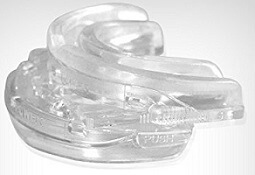 Eliminator Pro Eliminator Pro | 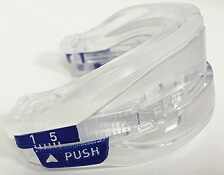 SnoreRx SnoreRx | |
|---|---|---|
| Heigth At Front | 1.09" | 1.01" |
| Heigth At Rear | .80" | .39" |
| Overall Depth | 1.65" | 1.65" |
| Widest Point | 2.63" | 2.73" |
| Country of Origin | China | USA |
| FDA Cleared | No | Yes |
| Material | Unknown | Medical Grade Copolymers |
| BPA Free | Yes | Yes |
| Warranty | 30 Day | 30 Day |
| Price | $49.97 | $99.00 |
Similarities and Differences
It’s easy to see that while the two products differ, they do share many of the same attributes.
The first difference that you may have noticed is the price. The Eliminator Pro retails for half the cost of the SnoreRX. Other differences include the country of origin, FDA clearance status, and materials used. Perhaps the most notable difference is the thickness at the rear of each device. Measuring .39″, the SnoreRx measures half the thickness at the rear compared to the SnoreRx.
Other measurements such as the height at the front, overall depth, and the widest point are nearly identical. Also, both products come with a 30-day money back guarantee.
As for design, they are both nearly identical with a few slight variations between the two.
Both products use a rigid plastic framework with a soft thermoplastic insert lining that attaches to the frame. Both have a ratcheting system that enables you to make micro-adjustments up to 10 mm, in 1 mm increments.
One small difference is the SnoreRx has grooves in the upper tray that fit into an adjoining counterpart located on the lower tray. This helps to center the upper and lower trays while making advancement adjustments. This feature is absent in the Eliminator Pro.
It’s fairly safe to say that the design of each is nearly the same. In fact, the framework is so similar, you can separate the upper and lower trays of each device and reconnect them to the other!
The Bottom Line
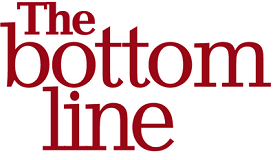 While this product is sold on Amazon as a Bruxism night guard with no mentions of the phrase “snoring”, based on the customer reviews, it’s evident that nearly everyone who has left feedback for this product is using it for the purpose of controlling snoring.
While this product is sold on Amazon as a Bruxism night guard with no mentions of the phrase “snoring”, based on the customer reviews, it’s evident that nearly everyone who has left feedback for this product is using it for the purpose of controlling snoring.
Aside from being a bit thicker at the rear of the device, the Eliminator Pro is a less expensive alternative than the $99 SnoreRx.
If the extra thickness and lack of FDA clearance are not a concern to you, then, by all means, go with the less expensive alternative. The Eliminator Pro advances the jaw and function just as any other mandibular advancement device does and is effective against snoring.
Keep in mind, several different styles of snoring mouthpieces are available. If you are interested, take a look at this comparison table that I created which allows you to compare nearly 30 different devices that are currently being sold.
Pros
- Adjustable trays allow for up to 10mm in advancement
- Can be custom molded using hot water
- Unique ability to adjust advancement setting after being molded
- Comes with a 30-day money back guarantee
- Affordable price
Cons
- A bit bulky at the rear compared to competitor
- No evidence of being FDA Cleared
Share This Post:
☆☆☆☆☆ 3.25 Star Rating The Eliminator Pro is a self-fitted adjustable mandibular advancement device that offers more features than its predecessor, the Snore Eliminator. While the product packaging contains no company information other than the email address “eliminatorreviews@gmail.com”, after a few minutes of searching I found that it is manufactured and sold by South Carolina […] Read more

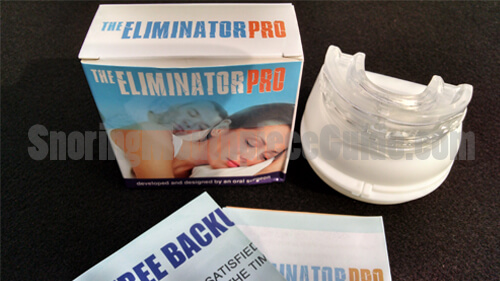
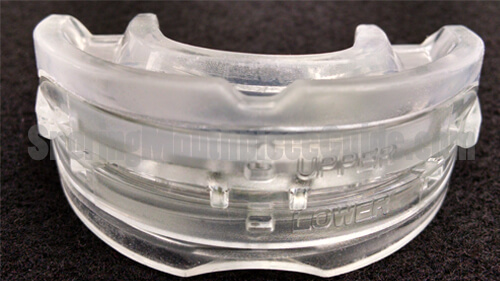
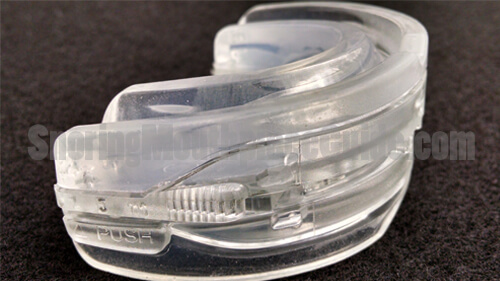
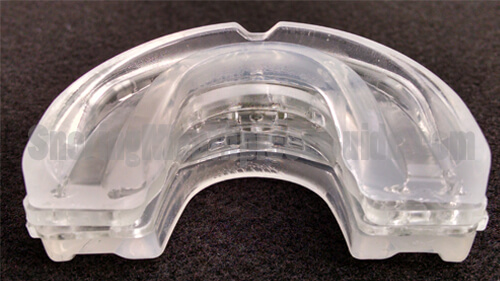
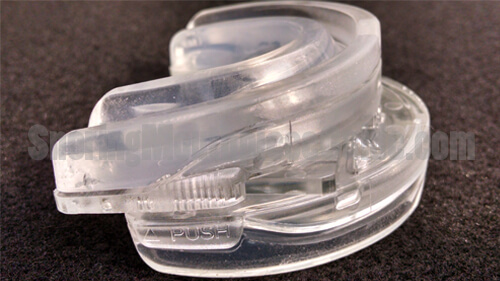
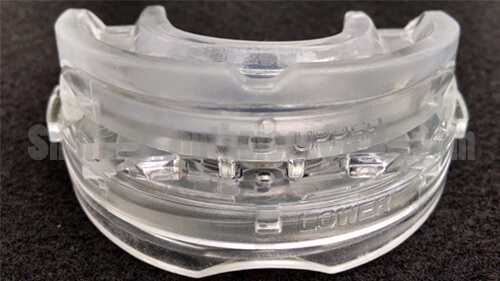
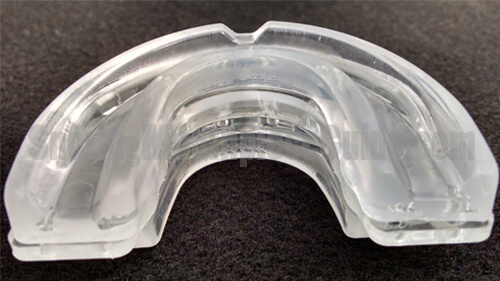
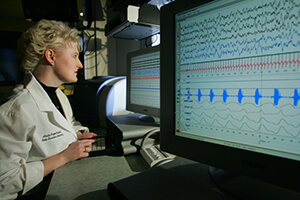 Obstructive Sleep Apnea (OSA), a condition were breathing becomes shallow and often pauses for several seconds while asleep, is becoming increasingly common not only in the United States but all around the world. While being older than 40 and carrying a few extra pounds are often to blame for this condition, this is not always the case as OSA also affects those who are younger than 40 and within a normal weight range.
Obstructive Sleep Apnea (OSA), a condition were breathing becomes shallow and often pauses for several seconds while asleep, is becoming increasingly common not only in the United States but all around the world. While being older than 40 and carrying a few extra pounds are often to blame for this condition, this is not always the case as OSA also affects those who are younger than 40 and within a normal weight range.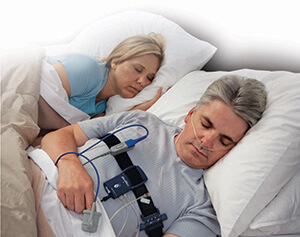 When an at home sleep study is prescribed, the patient has issued a small device in which several sensors plug into. This device records breathing activity as well as blood oxygen levels throughout the night as you sleep. This information is then downloaded and interpreted by either your doctor or the provider of the equipment. At home equipment typically contains the following sensors:
When an at home sleep study is prescribed, the patient has issued a small device in which several sensors plug into. This device records breathing activity as well as blood oxygen levels throughout the night as you sleep. This information is then downloaded and interpreted by either your doctor or the provider of the equipment. At home equipment typically contains the following sensors: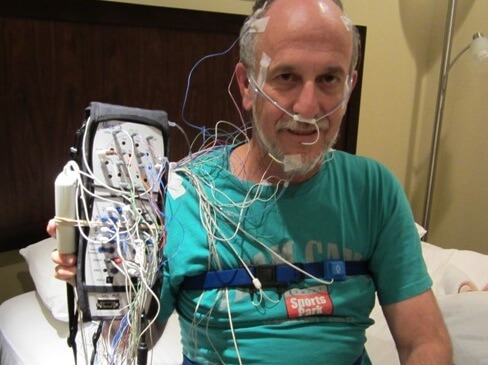 Unlike the at home sleep study, the in lab study is conducted at a sleep center. Chances are if you live in a suburban area or in a major city, there are several sleep centers in your area.
Unlike the at home sleep study, the in lab study is conducted at a sleep center. Chances are if you live in a suburban area or in a major city, there are several sleep centers in your area. Both home testing and lab testing have their fair share of criticism.
Both home testing and lab testing have their fair share of criticism.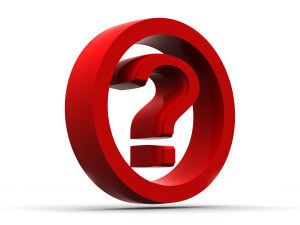 There are several factors that one should consider when deciding whether to go with a lab study or home study.
There are several factors that one should consider when deciding whether to go with a lab study or home study.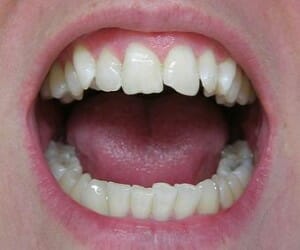 LAST UPDATE: 4/11/2019
LAST UPDATE: 4/11/2019 While searching for an answer, I came across a discussion which featured several doctors who offered their opinion on this topic.
While searching for an answer, I came across a discussion which featured several doctors who offered their opinion on this topic.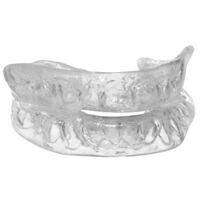 In addition, I also came across a few pieces of feedback left on Facebook pages, blogs posts, and product sales pages from people who were encouraging others not to purchase a particular product because it caused their teeth to move or they are unable to chew or even speak properly after using a particular device.
In addition, I also came across a few pieces of feedback left on Facebook pages, blogs posts, and product sales pages from people who were encouraging others not to purchase a particular product because it caused their teeth to move or they are unable to chew or even speak properly after using a particular device.  While teeth shift and bite issues could occur while using a mandibular advancement device, based on the information that I was able to gather, it is doesn’t seem to be a prevalent issue. There are some claims of tooth movement or alignment issues but not a whole lot of evidence to back up these claims.
While teeth shift and bite issues could occur while using a mandibular advancement device, based on the information that I was able to gather, it is doesn’t seem to be a prevalent issue. There are some claims of tooth movement or alignment issues but not a whole lot of evidence to back up these claims.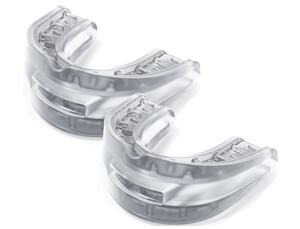
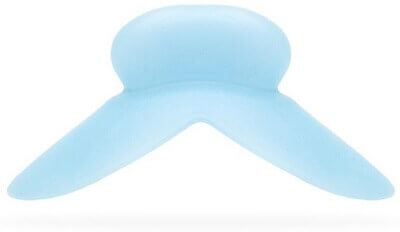
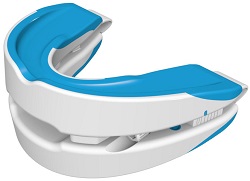
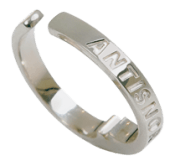 As we all know, or possibly don’t know, snoring is caused by muscles in your airway relaxing a bit too much. When you sleep, these relaxed muscles vibrate, thus creating noise when you breathe in and out. Acupressure, similar to acupuncture can activate the nerves around these relaxed muscles and stimulate them to once again be supportive, ultimately resulting in normal breathing functions and
As we all know, or possibly don’t know, snoring is caused by muscles in your airway relaxing a bit too much. When you sleep, these relaxed muscles vibrate, thus creating noise when you breathe in and out. Acupressure, similar to acupuncture can activate the nerves around these relaxed muscles and stimulate them to once again be supportive, ultimately resulting in normal breathing functions and  orer, and partner could compare night to night during the clinical trial and get the most meaningful results. The couples also used the Epworth Sleepiness Scale and
orer, and partner could compare night to night during the clinical trial and get the most meaningful results. The couples also used the Epworth Sleepiness Scale and 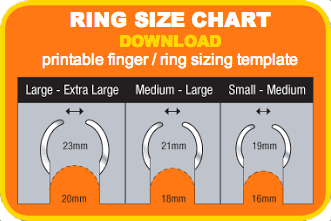 . The medium ring size will fit little fingers that measure 18mm-21mm in sizes or ring sizes 10-14. The large size will fit little fingers measuring 20mm-23mm in diameter or ring sizes 13-18.
. The medium ring size will fit little fingers that measure 18mm-21mm in sizes or ring sizes 10-14. The large size will fit little fingers measuring 20mm-23mm in diameter or ring sizes 13-18. n its original packaging, the receipt for the item (proof of purchase) and your mailing address for which they can send you your refund. Processing time for the return can take anywhere from 7 to 28 days.
n its original packaging, the receipt for the item (proof of purchase) and your mailing address for which they can send you your refund. Processing time for the return can take anywhere from 7 to 28 days. Morning sickness, fatigue, and unusual food cravings are all common and often anticipated side effects of pregnancy. However, the occurrence of snoring, on the other hand, leaves most pregnant women confused and usually concerned.
Morning sickness, fatigue, and unusual food cravings are all common and often anticipated side effects of pregnancy. However, the occurrence of snoring, on the other hand, leaves most pregnant women confused and usually concerned.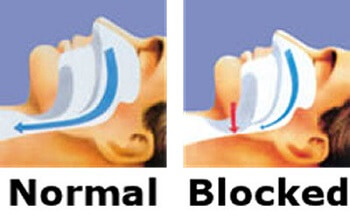
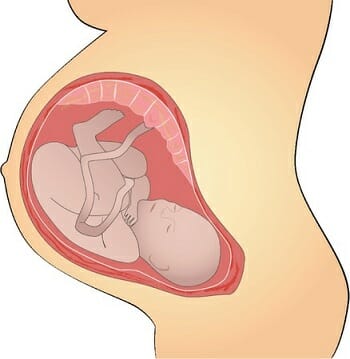 As your baby grows it will inevitably place pressure on your diaphragm which will make breathing more of a challenge. This pressure will cause restricted breathing which may ultimately cause snoring that did not exist prior to pregnancy.
As your baby grows it will inevitably place pressure on your diaphragm which will make breathing more of a challenge. This pressure will cause restricted breathing which may ultimately cause snoring that did not exist prior to pregnancy. Stress can cause a number of different symptoms regardless of your pregnancy status. Stress is often an overlooked factor when it comes to many different conditions including snoring.
Stress can cause a number of different symptoms regardless of your pregnancy status. Stress is often an overlooked factor when it comes to many different conditions including snoring.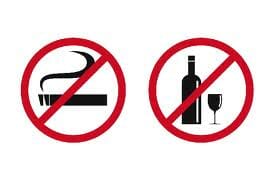 You may not know this but alcohol, tobacco, and sedatives such as sleeping pills can all cause snoring as they relax the throat muscles.
You may not know this but alcohol, tobacco, and sedatives such as sleeping pills can all cause snoring as they relax the throat muscles.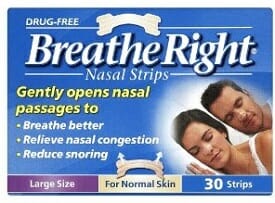 Inflamed nasal passages are going to occur regardless. One solution may be to use
Inflamed nasal passages are going to occur regardless. One solution may be to use 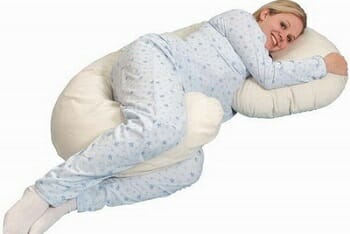 You may also want to try sleeping with a specialized pillow which will help to elevate your head and make sleeping on your side more comfortable.
You may also want to try sleeping with a specialized pillow which will help to elevate your head and make sleeping on your side more comfortable.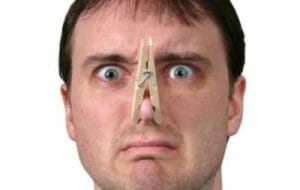
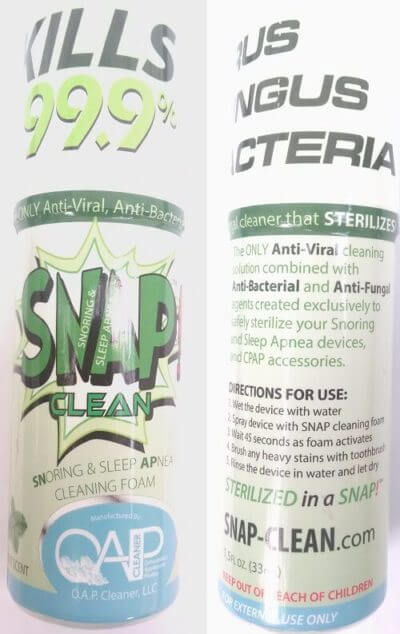 Z- Clean is a product that has been developed by the oral appliance manufacturer Zyppah who has teamed up with an Orthodontic Appliance Plastics, (O.A.P.) a Hewlett, NY company that specializes in cleaning and disinfecting products for everything from aligners to dentures and mouthguards.
Z- Clean is a product that has been developed by the oral appliance manufacturer Zyppah who has teamed up with an Orthodontic Appliance Plastics, (O.A.P.) a Hewlett, NY company that specializes in cleaning and disinfecting products for everything from aligners to dentures and mouthguards. Zyppah is currently selling one bottle for $19.95 plus $9.95 shipping and handling, bringing the overall cost to $30. However, if you are purchasing this as an add-on item while buying the Zyppah, shipping is combined and there are no additional shipping and handling charges.
Zyppah is currently selling one bottle for $19.95 plus $9.95 shipping and handling, bringing the overall cost to $30. However, if you are purchasing this as an add-on item while buying the Zyppah, shipping is combined and there are no additional shipping and handling charges.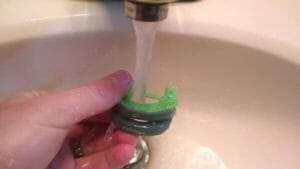
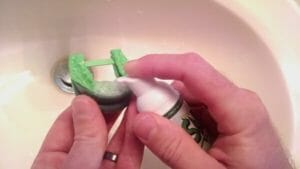
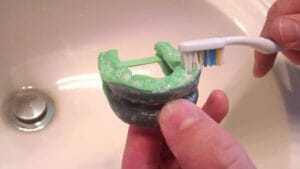
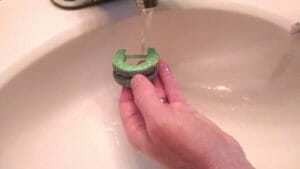
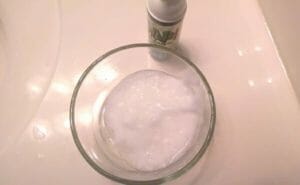
 Z Clean is an effective cleaner and sterilizer that solves the issue of smelly mouthpieces. While it’s a bit on the expensive side, a little bit really goes a long way. If used sparingly, a bottle will last for several weeks. In my opinion, $20 is a small price to pay for a product that cleans and sterilizes, leaving only a fresh mint scent behind. The Z Clean is by far the best oral appliance cleaning solution currently available on the market.
Z Clean is an effective cleaner and sterilizer that solves the issue of smelly mouthpieces. While it’s a bit on the expensive side, a little bit really goes a long way. If used sparingly, a bottle will last for several weeks. In my opinion, $20 is a small price to pay for a product that cleans and sterilizes, leaving only a fresh mint scent behind. The Z Clean is by far the best oral appliance cleaning solution currently available on the market.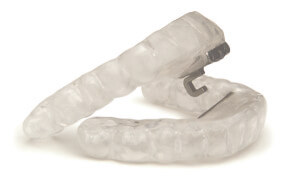 You have spent countless nights trying to become accustomed to wearing your CPAP mask and have grown tired and feel defeated. Frustration sets in and you are actually considering surgery as a solution to your sleep apnea. If this sounds familiar, you may want to take another look at your options prior to undergoing an often painful and risky surgical procedure that still do not guarantee results.
You have spent countless nights trying to become accustomed to wearing your CPAP mask and have grown tired and feel defeated. Frustration sets in and you are actually considering surgery as a solution to your sleep apnea. If this sounds familiar, you may want to take another look at your options prior to undergoing an often painful and risky surgical procedure that still do not guarantee results.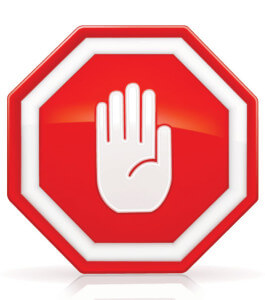 This type of treatment does have its limitations.
This type of treatment does have its limitations.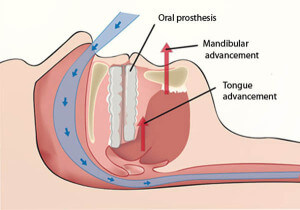 After many failed attempts with the CPAP, you have decided to further explore dental appliances. What exactly is a dental appliance, how are they used, and how much do they cost? These are a few questions that I hope to answer.
After many failed attempts with the CPAP, you have decided to further explore dental appliances. What exactly is a dental appliance, how are they used, and how much do they cost? These are a few questions that I hope to answer. One of the most commonly asked questions that I hear is “How much will an oral appliance cost?” or “Will my insurance cover one?”. The short answer is
One of the most commonly asked questions that I hear is “How much will an oral appliance cost?” or “Will my insurance cover one?”. The short answer is 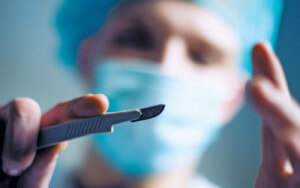 Most doctors will tell you that invasive surgery should be last on your list when it comes to treating OSA. Depending on the type of surgery that you are considering, the recovery period could last for several days to several weeks or even months. Even after undergoing surgery, some patients still have issues with sleep apnea.
Most doctors will tell you that invasive surgery should be last on your list when it comes to treating OSA. Depending on the type of surgery that you are considering, the recovery period could last for several days to several weeks or even months. Even after undergoing surgery, some patients still have issues with sleep apnea.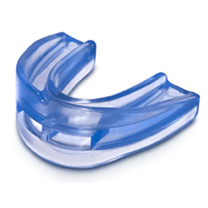 The first product that I had tried was a simple one-piece boil and bite device with two medium size breather holes at the front. When it arrived, it appeared to be about the size that I had envisioned based on the online photos. Before starting the fitting process, I placed it into my mouth to get a feel for its actual size. As I expected, it was pretty bulky and left about a half inch of space between my upper and lower teeth. At this point, I began to question whether or not I would be able to tolerate such a gargantuan piece of plastic stuffed inside of my oral cavity.
The first product that I had tried was a simple one-piece boil and bite device with two medium size breather holes at the front. When it arrived, it appeared to be about the size that I had envisioned based on the online photos. Before starting the fitting process, I placed it into my mouth to get a feel for its actual size. As I expected, it was pretty bulky and left about a half inch of space between my upper and lower teeth. At this point, I began to question whether or not I would be able to tolerate such a gargantuan piece of plastic stuffed inside of my oral cavity.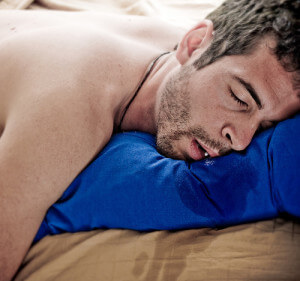 From here I gave it a try, to see if it actually worked. The first night was rather awkward. I woke up in the morning next to a large pile of drool and felt a bit of soreness in my jaw. While I was not exactly thrilled with my first night experience, I was pleasantly surprised when my wife told me that I did not snore one bit throughout the night. This confirmation provided a glimmer of hope that I may have found a snoring solution that actually works. After contacting the manufacturer’s customer support, I learned that drooling and soreness are typical side effects that usually disappear after a few days.
From here I gave it a try, to see if it actually worked. The first night was rather awkward. I woke up in the morning next to a large pile of drool and felt a bit of soreness in my jaw. While I was not exactly thrilled with my first night experience, I was pleasantly surprised when my wife told me that I did not snore one bit throughout the night. This confirmation provided a glimmer of hope that I may have found a snoring solution that actually works. After contacting the manufacturer’s customer support, I learned that drooling and soreness are typical side effects that usually disappear after a few days.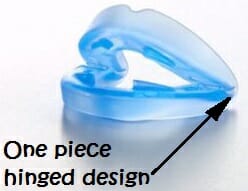
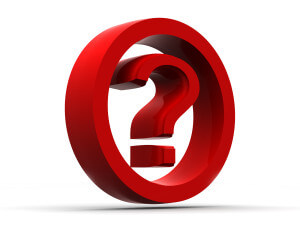 After several different trials with various products, I must say that each takes a few days to adjust. After passing the adjustment period, wearing a snoring mouthguard is comfortable and fairly easy to tolerate. While I still prefer a more compact version of this product, such as the zQuiet, I always eventually became accustomed to wearing any product that I have tried.
After several different trials with various products, I must say that each takes a few days to adjust. After passing the adjustment period, wearing a snoring mouthguard is comfortable and fairly easy to tolerate. While I still prefer a more compact version of this product, such as the zQuiet, I always eventually became accustomed to wearing any product that I have tried.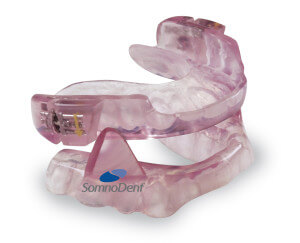 Before getting too far ahead, it’s important to understand that in most cases, health insurance companies are not going to cover an appliance that is used for the sole purpose of controlling snoring.
Before getting too far ahead, it’s important to understand that in most cases, health insurance companies are not going to cover an appliance that is used for the sole purpose of controlling snoring. Unfortunately, with so many insurance companies out there, it’s impossible to make a blanket statement concerning all insurance coverage. Since the insurance companies do not publish the amount that they will cover, not even your doctor can give you an exact out of pocket amount until several weeks after getting the insurance process rolling.
Unfortunately, with so many insurance companies out there, it’s impossible to make a blanket statement concerning all insurance coverage. Since the insurance companies do not publish the amount that they will cover, not even your doctor can give you an exact out of pocket amount until several weeks after getting the insurance process rolling. As a general rule, it’s a good idea not to depend on your insurance company to cover 100% of the cost of your oral appliance. Although better insurance companies will pick up all of the costs associated with obtaining an oral appliance, others will only cover about half.
As a general rule, it’s a good idea not to depend on your insurance company to cover 100% of the cost of your oral appliance. Although better insurance companies will pick up all of the costs associated with obtaining an oral appliance, others will only cover about half.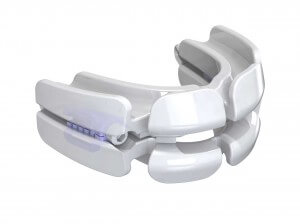 What if you are interested in obtaining a dental appliance for the sole purpose of controlling snoring that is not related to OSA?
What if you are interested in obtaining a dental appliance for the sole purpose of controlling snoring that is not related to OSA? In recent years, there has been quite a bit of confusion regarding oral appliance therapy and insurance coverage. Unfortunately, many people have been led to believe that oral appliances are expensive and most insurance companies do not cover them. While this may have been true in years past, this no longer seems to be the case.
In recent years, there has been quite a bit of confusion regarding oral appliance therapy and insurance coverage. Unfortunately, many people have been led to believe that oral appliances are expensive and most insurance companies do not cover them. While this may have been true in years past, this no longer seems to be the case.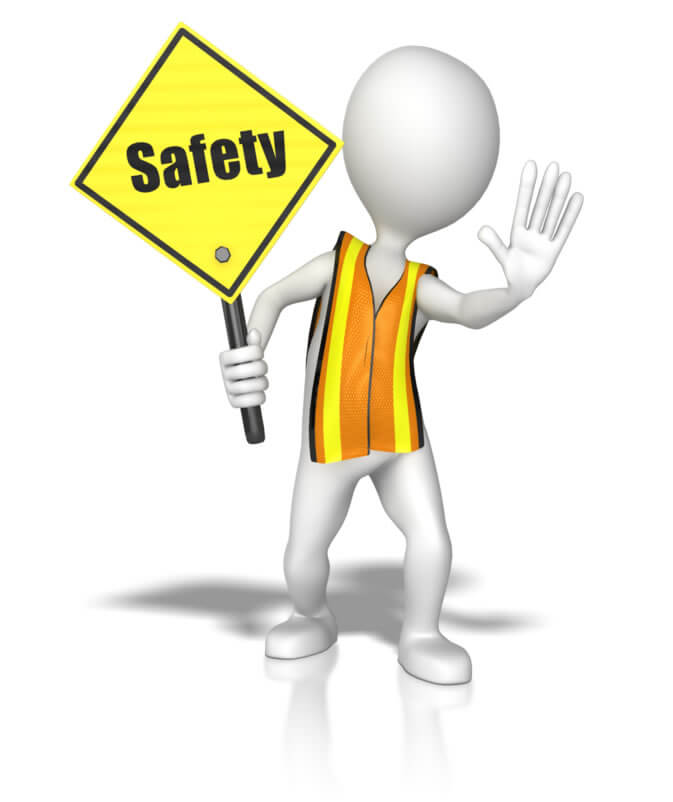 According to the
According to the 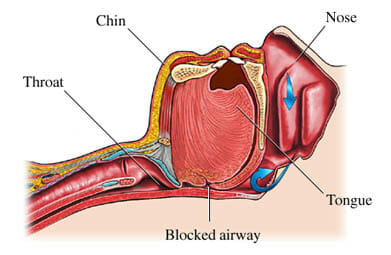 In a nutshell, a traditional a MAD resembles an athletic mouthguard and is placed into the mouth at night before going to bed. The device fits around your teeth and holds the lower jaw forward. Doing so opens a restricted airway which is the most common area where snoring occurs. A more in-depth explanation of how these devices work can be
In a nutshell, a traditional a MAD resembles an athletic mouthguard and is placed into the mouth at night before going to bed. The device fits around your teeth and holds the lower jaw forward. Doing so opens a restricted airway which is the most common area where snoring occurs. A more in-depth explanation of how these devices work can be 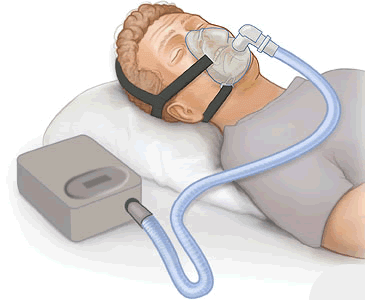 One of the greatest safety concerns when it comes to using a mouthpiece to prevent snoring is whether or not there is a presence of what is known as sleep apnea. Sleep apnea occurs when there is a momentary pause in breathing while asleep that can often last for several seconds. It just so happens that snoring may be a sign of sleep apnea.
One of the greatest safety concerns when it comes to using a mouthpiece to prevent snoring is whether or not there is a presence of what is known as sleep apnea. Sleep apnea occurs when there is a momentary pause in breathing while asleep that can often last for several seconds. It just so happens that snoring may be a sign of sleep apnea.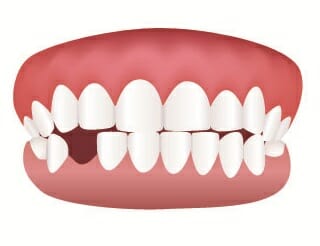 For the sake of safety, those with loose or a number of missing teeth should not use a mouthpiece to prevent snoring. Two trays, an upper and lower, fit snugly around the teeth and use leverage points to hold the jaw in the forward position. Since a strong set of teeth are needed for proper functioning, such devices should not be used if you are experiencing any such dental issues.
For the sake of safety, those with loose or a number of missing teeth should not use a mouthpiece to prevent snoring. Two trays, an upper and lower, fit snugly around the teeth and use leverage points to hold the jaw in the forward position. Since a strong set of teeth are needed for proper functioning, such devices should not be used if you are experiencing any such dental issues.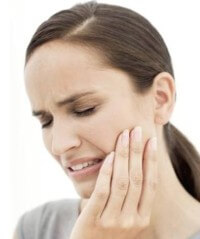 For those who have jaw issues such as Temporomandibular Joint Dysfunction (TMJ), a jaw that pops, locks, or dislocates or any other problems with their jaw should not use a mouthpiece for snoring. Doing so is not safe and can cause further issues.
For those who have jaw issues such as Temporomandibular Joint Dysfunction (TMJ), a jaw that pops, locks, or dislocates or any other problems with their jaw should not use a mouthpiece for snoring. Doing so is not safe and can cause further issues.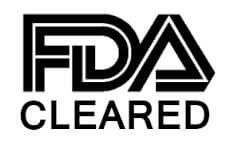 Choosing a product that has been cleared by the Food and Drug Administration (United States) is an important safety consideration that should be examined prior to using a mouthpiece. The FDA examines the safety of such medical devices and issues clearance prior to the product being sold.
Choosing a product that has been cleared by the Food and Drug Administration (United States) is an important safety consideration that should be examined prior to using a mouthpiece. The FDA examines the safety of such medical devices and issues clearance prior to the product being sold. When it comes to safety, be sure to review the above safety considerations before deciding to use any such product to stop your snoring.
When it comes to safety, be sure to review the above safety considerations before deciding to use any such product to stop your snoring.